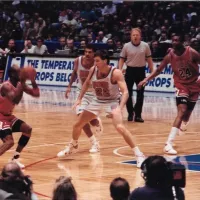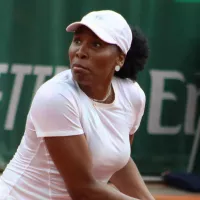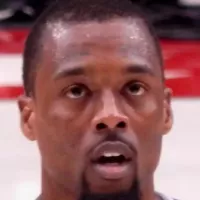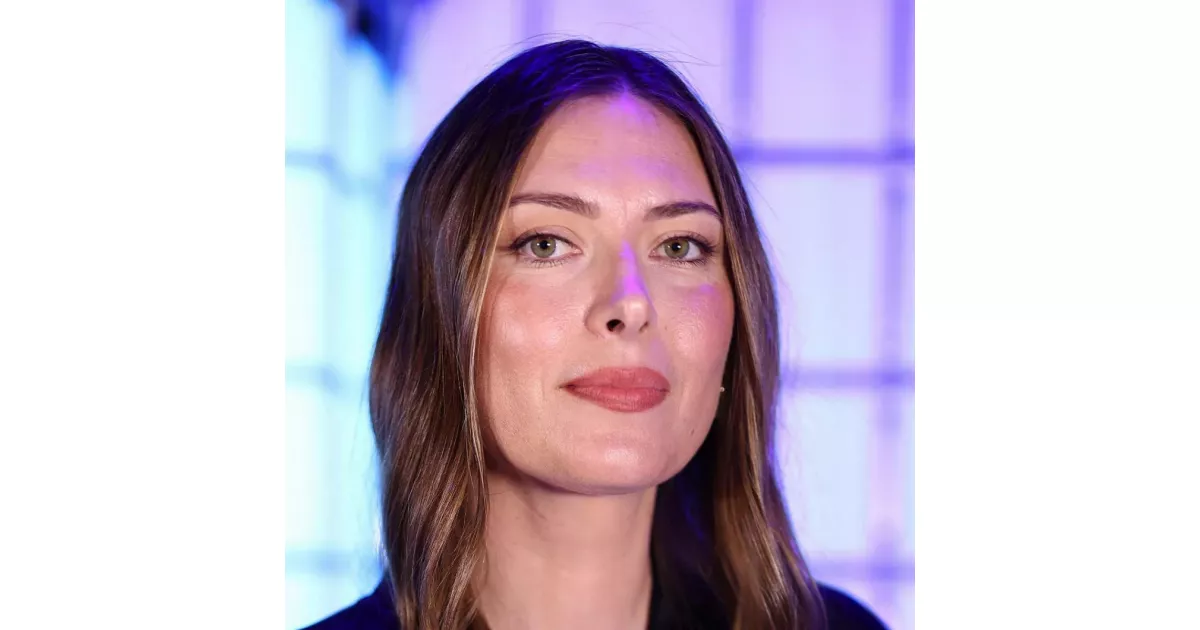Resilience and perseverance in the journey of Maria Sharapova. A timeline of obstacles and growth.
Maria Sharapova is a retired Russian professional tennis player. She achieved the world No. 1 ranking by the WTA for 21 weeks and secured 36 WTA Tour-level singles titles. A defining aspect of her career is her accomplishment of winning five major titles and the 2004 WTA Tour Championships. Notably, she is one of only ten women to have completed a career Grand Slam in singles, marking her as a significant figure in tennis history.
August 2002: Lowest Ranking Since August 2002
Following her first-round defeat at the 2020 Australian Open, Sharapova's ranking fell to no. 369, her lowest ranking since August 2002. This marked a significant downturn in her career.
2002: Lowest Year-End Ranking Since 2002
In 2015, Sharapova finished the year with a ranking of No. 131, marking her lowest year-end ranking since 2002. Her performance included early exits from tournaments and a loss at the US Open.
2003: First Opening Match Loss at a Grand Slam Since 2003
In 2003, Maria Sharapova had lost her opening match at a Grand Slam event, which caused her to win a Cellular South Cup, her 21st career WTA title, and first of the year.
2003: Earliest Wimbledon Loss Since 2003
In 2003, Sharapova experienced her earliest Wimbledon loss since 2003 by losing in the fourth round to eventual champion Venus Williams.
2003: Earliest Exit from Miami Open since 2003
In 2003, at the Miami Open, Maria Sharapova experienced her earliest exit from the tournament since her first appearance, losing in the second round to Daria Gavrilova.
2004: First Time Out of Top 5 Since 2004
Following the US Open loss, Sharapova lost her opening match to Victoria Azarenka, and she fell out of the top 5 in the world rankings for the first time since 2004. Despite this, Sharapova topped her round-robin group at the tournament, after winning all three of her matches, defeating Svetlana Kuznetsova, Ana Ivanovic, and Daniela Hantuchová.
2004: Earliest Exit at Grand Slam Since 2004 US Open
In 2004, during her US Open title defense, Sharapova faced an upset in her third-round match by Agnieszka Radwańska, marking her earliest exit at a Grand Slam singles tournament since the 2004 US Open.
2005: On-Court Grunting
In 2005, Sharapova's on-court grunting reached a recorded 101 decibels during a match at Wimbledon. She described it as a natural instinct.
April 2006: Withdrawal from Fed Cup Tie Against Belgium
In April 2006, Sharapova withdrew from the Fed Cup tie against Belgium, despite stating at the end of 2005 that she was keen to make her Fed Cup debut.
April 2007: Withdrawal from Fed Cup Tie Against Spain
In April 2007, Sharapova withdrew from the Fed Cup tie against Spain due to injuries.
July 2007: Withdrawal from Fed Cup Tie Against United States
In July 2007, Sharapova withdrew from the Fed Cup tie against the United States because of injuries, leading to the Russian captain suggesting she would be ineligible for the Fed Cup final in September.
2007: Defeat at the US Open
At the US Open in 2007, Maria Sharapova lost to American teenager Melanie Oudin in the third round, resulting in a drop in her ranking to No. 32.
2007: Acknowledged Discomfort on Clay Courts
In 2007, Sharapova admitted that she was not as comfortable with her movement on clay courts compared to other surfaces and described herself as like a "cow on ice" on clay.
2007: Shoulder Problems Impact Serve
Since the beginning of 2007, Sharapova's shoulder problems reduced the effectiveness of her serve, leading to inconsistent first serves and more double faults.
2008: Loss to Dinara Safina at the 2008 French Open
In 2008, Maria Sharapova experienced a loss to Dinara Safina in the fourth round of the French Open, marking the last time she lost a match on clay after winning the first set until a later match.
2008: Injury Layoff and Abbreviated Serve
In her return from an injury layoff in 2008 to 2009, Sharapova used an abbreviated serve motion, which resulted in less power and a high number of double faults.
February 2009: Sharapova Drops Out of Top 10
In February 2009, Maria Sharapova dropped out of the top 10, before returning in 2011.
2009: Loss at the US Open
At the US Open in 2009, Maria Sharapova was the 14th seed and made it to the fourth round, where she lost to top seed Caroline Wozniacki.
2009: Abbreviated Motion Continued
In 2008 and 2009, Sharapova continued to use an abbreviated motion, which, whilst producing aces, was somewhat less powerful, and also gave a very high number of double faults.
2010: Worst Grand Slam Result Since 2010 Australian Open
In 2010, Maria Sharapova had her worst Grand Slam result since the 2010 Australian Open, marking her first-ever opening round loss at Wimbledon after losing to Vitalia Diatchenko in three sets.
2011: Sharapova's Performance and Health Issues in Early 2011
In 2011, Sharapova participated in the Australian Open as the 14th seed but lost in the fourth round. She withdrew from the Dubai Championships and the Qatar Open due to an ear infection. She returned to the tour in March at the BNP Paribas Open, reaching the semifinal. At Key Biscayne, she reached the final, returning to the top 10 for the first time since February 2009.
2011: Sharapova's Performance at US Open and WTA Tour Championships in 2011
In 2011, Sharapova participated in the US Open, but was upset in the third round. She qualified for the WTA Tour Championships for the first time since 2007 but withdrew during the round-robin stage due to an ankle injury. She ended the year as No. 4 in the world.
2011: Loss in 2011 Fed Cup
In the 2011 Fed Cup first-round tie, Sharapova lost her match against Virginie Razzano of France. She was scheduled to play Alizé Cornet but was suffering from a viral illness.
August 2013: Sharapova's Shoulder Injury in August 2013
Maria Sharapova had not played since August 2013 due to a recurring shoulder injury.
2013: First Opening Round Loss since 2013
In 2013, Maria Sharapova recorded her first opening round loss since 2013 at the Kremlin Cup, losing in straight sets to Magdaléna Rybáriková.
2015: First grasscourt win since 2015 at the Mallorca Open
In 2015, Sharapova secured her first grasscourt win since 2015 at the Mallorca Open, defeating Viktória Kužmová. However, her run ended in the second round against Angelique Kerber. She ended the year ranked No. 131, her lowest year-end ranking since 2002.
January 2016: Failed Drug Test at the 2016 Australian Open
In January 2016, Maria Sharapova failed a drug test at the Australian Open after testing positive for meldonium, a substance newly banned by WADA. This led to her provisional suspension from competitive tennis.
January 2016: Meldonium Added to Banned Substances List
In January 2016, meldonium, a drug Sharapova had been taking, was added to the World Anti-Doping Agency (WADA)'s list of banned substances. Sharapova later tested positive for the drug at the 2016 Australian Open.
March 2016: Denial of Missed Warnings
In March 2016, Sharapova denied reports that she had missed five warnings about meldonium being added to the banned substances list. She communicated this denial via Facebook.
March 2016: Failed Drug Test Announcement
On 7 March 2016, Sharapova revealed that she had failed a drug test at the 2016 Australian Open due to testing positive for meldonium. She was provisionally suspended by the International Tennis Federation (ITF) effective from 12 March 2016.
June 2016: Two-Year Suspension
On June 8, 2016, Maria Sharapova was suspended from playing tennis for two years by the International Tennis Federation (ITF) due to the failed drug test.
September 2016: CAS Ruling on Sharapova's Suspension
Following hearings on 7 and 8 September 2016, the Court of Arbitration for Sport (CAS) panel found that Sharapova had a reduced perception of risk while using Mildronate. This was based on her long-term use without anti-doping issues, openness about its use, consultation with the prescribing doctor, and lack of specific warnings. However, CAS also noted her failure to disclose meldonium use on doping control forms and her agent's failure to properly check the Prohibited List.
October 2016: Suspension Reduced to 15 Months
On October 4, 2016, Maria Sharapova's suspension was reduced to 15 months, retroactive to the date of the failed test, by the Court of Arbitration for Sport.
2016: Return to Hard Court at Stanford Classic since 2016 Australian Open
In 2016, Maria Sharapova participated in her first hard court tournament at the Stanford Classic since the Australian Open. After winning her first round, she withdrew from the next round with a left arm injury.
2016: Withdrawal from Brisbane International in 2016
In 2016, Maria Sharapova was the defending champion at the Brisbane International. However, she withdrew hours before her first-round match due to a left forearm injury.
2016: Explanation of Failed Drug Test
In 2016, Sharapova explained that she had been taking a medicine called mildronate, also known as meldonium, for ten years for health issues, prescribed in 2006. She claimed she was unaware that meldonium had been added to WADA's banned list on January 1, 2016.
2016: Reactions to Sharapova's Announcement
In 2016, fellow tennis players reacted to Sharapova's announcement of failing a drug test with mixed reactions. Some, like John McEnroe and Pat Cash, were skeptical, while others, like Serena Williams, commended her for being upfront. Roger Federer, Rafael Nadal, and Andy Murray publicly condemned her, arguing for punishment. Novak Djokovic expressed sympathy but acknowledged the need for punishment. The Russian Tennis Federation defended Sharapova.
2017: Participation in Madrid and Italian Opens and French Open Wildcard Denial in 2017
In 2017, Maria Sharapova participated in the Madrid Open and the Italian Open. She was denied a wildcard for the French Open, preventing her from competing in the tournament.
2019: 2019 Season
In 2019, Sharapova's season included competing in the Shenzhen Open, the Australian Open, and the St. Petersburg Ladies' Trophy. She faced various wins and losses, including a withdrawal due to a shoulder injury, and ended up withdrawing from several tournaments due to lingering shoulder problems.
2020: 2020 Season and Australian Open
In 2020, Sharapova began her season with an exhibition tournament in Abu Dhabi. She participated in the Brisbane International and the Kooyong Classic. At the 2020 Australian Open, she faced a first-round defeat, resulting in her ranking falling to no. 369, her lowest since August 2002.
Mentioned in this timeline

Basketball is a team sport played on a rectangular court...
Ukraine is a large country in Eastern Europe second in...

Serena Williams is a highly accomplished American former professional tennis...

Venus Williams is a highly accomplished American professional tennis player...

Sony is a Japanese multinational conglomerate based in Tokyo Its...

Mark Cuban is an accomplished American businessman television personality and...
Trending

Simon Cowell is a prominent English television personality and businessman recognized for his role as a judge on various talent...

7 months ago Gary Payton Reflects on Jordan Matchup and Hypothetical Stats in Today's NBA

11 days ago Spurs Defeat Nuggets in Thrilling Game, Mavericks Face Nuggets

22 days ago Michael Douglas and Catherine Zeta-Jones Celebrate 25 Years of Marriage with Throwbacks
Luke Kornet is an American professional basketball player currently playing for the San Antonio Spurs in the NBA He's a...

6 months ago Jack Black's Minecraft Movie Sets Premiere on HBO Max, June 20, 2025
Popular

Candace Owens is an American conservative political commentator and author...

Ilhan Omar is an American politician currently serving as the...

XXXTentacion born Jahseh Dwayne Ricardo Onfroy was a controversial yet...

Tom Cotton is an American politician and Army veteran currently...
The Kennedy Center Honors are annual awards recognizing individuals and...

Kelsey Grammer is an accomplished American actor producer and singer...
